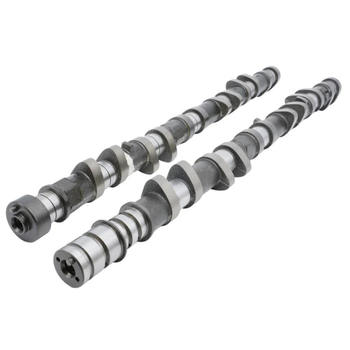Introduction: The Hidden Danger of Crankshaft Torsional Vibration
You might not realize it, but your engine's performance and longevity are under constant assault from an unseen enemy: crankshaft torsional vibration. This destructive force can wreak havoc on your engine's internal components, leading to reduced performance, increased wear and tear, and even catastrophic failure. But fear not! In this article, we'll delve into the world of crankshaft torsional vibration, exploring its causes, detection methods, and mitigation strategies. By the end, you'll be well-equipped to keep your engine running smoothly and safely.
Understanding Crankshaft Torsional Vibration
So, what exactly is crankshaft torsional vibration? In simple terms, it's the twisting and untwisting motion that occurs along the length of the crankshaft as your engine's cylinders fire. This twisting motion is caused by the sudden torque inputs from each cylinder, which can cause the crankshaft to oscillate or "whip" back and forth. These oscillations can lead to excessive stress on the crankshaft, connecting rods, and bearings, ultimately resulting in premature wear and potential engine failure.
The Role of Harmonic Frequencies
Interestingly enough, crankshaft torsional vibration is often caused by harmonic frequencies, which are multiples of the engine's operating speed. For example, a four-cylinder engine may experience significant torsional vibration at twice its operating speed due to the synchronized firing of opposing cylinders. This phenomenon can exacerbate the twisting motion of the crankshaft, leading to increased stress and potential damage.
Detecting Crankshaft Torsional Vibration
Detecting crankshaft torsional vibration can be a challenging task, as it often occurs at frequencies that are difficult to measure with traditional vibration monitoring techniques. However, there are a few methods that can help you identify this elusive enemy:
Mitigating Crankshaft Torsional Vibration
Once you've identified the presence of crankshaft torsional vibration, it's time to take action. Here are a few strategies for mitigating this destructive force:
Dampers and Harmonic Balancers
One of the most common methods for reducing crankshaft torsional vibration is the use of dampers or harmonic balancers. These devices are designed to absorb and dissipate the energy created by the twisting motion of the crankshaft, effectively reducing the oscillation amplitude and minimizing stress on the engine's components. Dampers and harmonic balancers are typically made from a combination of metal, rubber, and other materials that provide both strength and flexibility.
Crankshaft Design Modifications
In some cases, it may be possible to reduce crankshaft torsional vibration through modifications to the crankshaft's design. For example, incorporating larger or more numerous counterweights can help balance the forces acting on the crankshaft, reducing its tendency to oscillate. Additionally, using materials with higher torsional stiffness can help minimize twisting and improve overall engine performance.
Practical Applications: Monitoring and Maintenance
Now that you understand the causes, detection methods, and mitigation strategies for crankshaft torsional vibration, it's time to put this knowledge into practice. Here are a few actionable tips to help you keep your engine running smoothly:
- Regularly monitor your engine's vibration levels using specialized equipment or consult a professional vibration analysis service.
- Inspect your engine's dampers and harmonic balancers for signs of wear or damage, and replace them as needed.
- Consider upgrading your engine's crankshaft or incorporating design modifications to reduce torsional vibration and improve performance.
Conclusion: Keep Your Engine Running Smoothly
Crankshaft torsional vibration may be a hidden enemy, but by understanding its causes and employing the right detection and mitigation strategies, you can keep your engine running smoothly and safely. So the next time you're under the hood, take a moment to appreciate the complexity of your engine's internal workings – and the importance of maintaining proper crankshaft health. And remember, when it comes to engine performance and longevity, knowledge is power!




